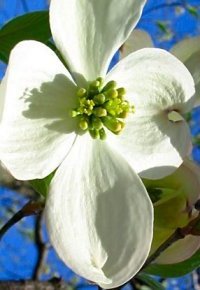Jesus was crucified on a tree known as the dogwood. Legend has it that this tree once grew tall and strong, but after being used for such a dark purpose, it vowed never to grow large again. Its flowers now bear the shape of a cross with nail prints on each petal, a lasting reminder of the sacrifice made. Through the centuries, the story of the dogwood tree has become intertwined with the crucifixion of Jesus, symbolizing hope and renewal. The mystery of what type of tree Jesus was crucified on continues to spark contemplation and curiosity among many.
Exploring the Mystery: What Type of Tree Was Jesus Crucified On?
Today, we delve into a fascinating question that has intrigued historians, theologians, and curious minds for centuries: What type of tree was Jesus crucified on? The crucifixion of Jesus Christ is a pivotal moment in Christian history, and the details surrounding the event, including the type of tree used for the cross, have sparked debate and speculation. Let’s embark on a journey to uncover the truth behind this enduring mystery.
The Symbolism of the Cross
Before we dive into the specifics of the type of tree, let’s first understand the significance of the cross in Christianity. The cross is a powerful symbol of faith, redemption, and sacrifice for Christians around the world. It represents the ultimate act of love and salvation, as Jesus willingly gave his life on the cross to atone for the sins of humanity.
Throughout history, the cross has served as a reminder of Jesus’ sacrifice and a beacon of hope for believers. Its shape is synonymous with the central teachings of Christianity, emphasizing themes of forgiveness, grace, and eternal life.
The Historical Context of Crucifixion
Crucifixion was a common form of capital punishment in the ancient Roman Empire, used to execute criminals and dissenters. The practice involved affixing a person to a wooden cross and leaving them to die a slow and agonizing death. Crucifixion was intended to be a public and humiliating spectacle, serving as a deterrent to would-be rebels and criminals.
Given the prevalence of crucifixion during Jesus’ time, it is likely that the type of tree used for his cross was a common and readily available material. However, historical records and biblical accounts offer limited details on the specific type of tree, leading to speculation and varying interpretations.
Possible Trees Used for Crucifixion
While the Bible does not explicitly mention the type of tree used for Jesus’ cross, scholars and researchers have proposed several theories based on historical and botanical evidence. Let’s explore some of the most commonly suggested candidates:
1. Cedar
Some scholars believe that Jesus may have been crucified on a cross made from cedar wood. Cedars were abundant in the region at the time and were known for their strength and durability. The aromatic wood of the cedar tree was highly prized for construction and carpentry, making it a plausible choice for crafting crosses.
2. Pine
Another theory suggests that the cross may have been made from pine wood. Pine trees were also prevalent in the area and were used for various purposes, including building materials and fuel. The lightness and flexibility of pine wood could have made it a practical option for constructing crosses.
3. Olive
Some historians propose that olive wood might have been used for Jesus’ cross. Olive trees were a symbol of peace and prosperity in the region, and their wood was valued for its strength and rich grain patterns. Olive wood was commonly used for crafting religious artifacts and could have been chosen for its symbolic significance.
The Spiritual Significance of the Cross
While the debate over the type of tree used for Jesus’ cross continues, it is essential to remember that the true power of the cross lies not in its material composition, but in its spiritual significance. The cross represents the ultimate expression of God’s love and grace, offering redemption and salvation to all who believe.
As Christians reflect on the crucifixion of Jesus Christ, they are reminded of the profound sacrifice he made for humanity and the hope that his resurrection brings. The cross stands as a beacon of light in a world filled with darkness, guiding believers toward forgiveness, healing, and eternal life.
In conclusion, the question of what type of tree Jesus was crucified on remains a mystery that continues to captivate scholars and believers alike. While historical evidence may be lacking, the spiritual significance of the cross transcends its material origins, pointing to the profound message of love and redemption at the heart of Christianity.
As we ponder the mystery of the cross, let us seek to embody its message of forgiveness, compassion, and grace in our own lives. May the symbol of the cross serve as a constant reminder of the enduring power of faith and the promise of salvation for all who believe.
Thank you for joining us on this journey of exploration and discovery. May the mystery of the cross inspire you to seek deeper truths and embrace the transformative power of God’s love in your life.
The Legend of the Dogwood Tree (Jesus Crucifixion)
Frequently Asked Questions
What type of tree was Jesus crucified on?
The exact type of tree that Jesus was crucified on is not explicitly mentioned in the Bible. However, historical and biblical scholars believe that it was likely either a dogwood, olive, or cedar tree. The Bible refers to it simply as a “tree” without specifying the specific type.
Is there significance behind the type of tree Jesus was crucified on?
While there is no direct significance attributed to the type of tree, various legends and traditions have developed around the idea. For example, the dogwood tree is said to have changed after being used for the crucifixion, symbolizing the transformative power of Jesus’ sacrifice, but these are not based on historical facts.
Why is the type of tree used for Jesus’ crucifixion not explicitly stated in the Bible?
The Bible focuses on the events and teachings of Jesus rather than the specific details of the physical surroundings. The emphasis is on the spiritual significance of the crucifixion rather than the material aspects such as the type of tree.
Final Thoughts
Some believe Jesus was crucified on a dogwood tree, while others think it was a cedar or pine. However, historical records are inconclusive. The importance lies in the sacrifice, not the specific type of tree. The type of tree Jesus was crucified on remains a subject of speculation and interpretation.






